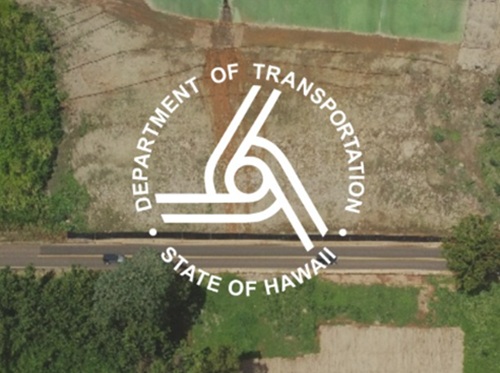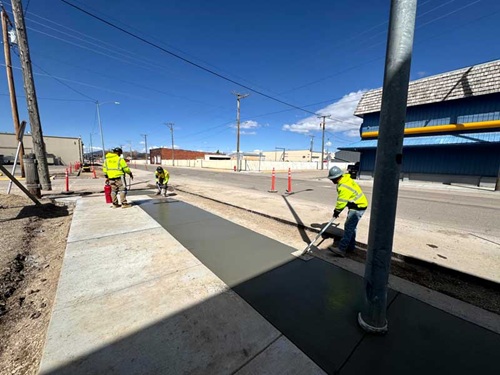The Hawaii Department of Transportation recently unveiled a new “Priority Multimodal Network” – a collection of 113 projects on the state highway system that will fill accessibility gaps for pedestrian, transit, and bicycle users across the Hawaiian island chain.
[Above photo by Hawaii DOT]
The agency said those projects include shared-use paths, protected bike lanes, sidewalks, and transit facilities – with the program focusing resources and accelerating implementation timelines sooner than originally planned. Together, those projects will provide affordable transportation options and improve connections between Hawaiian communities, Hawaii DOT emphasized.
The agency plans to invest approximately $360 million in this multimodal project effort over the next 10 years. Approximately $170 million of that funding is earmarked for initiatives aimed at filling critical access gaps, with construction slated to start between 2025 and 2029. The remaining $190 million will fund additional construction between 2030 and 2034. Hawaii DOT emphasized that this network does not include projects on county roads; rather, it seeks to connect multimodal infrastructure on state highways to multimodal infrastructure on county roads.
“This network reflects [our] commitment to creating a safer, more connected Hawaii where walking, biking and transit are reliable and affordable choices for daily travel,” said Ed Sniffen, Hawaii DOT director, in a statement. “Making an investment in the infrastructure needed to support multimodal transportation will help improve the quality of life for our neighbors and communities.”
Other state departments of transportation are engaged in similar efforts. For example, the Utah Department of Transportation recently completed the master plan map for the Utah Trail Network; a plan that is expected to be updated every four years.
The agency has designated 2,600 miles of new paved trails and 500 miles of existing trails as part of what the governor called a “visionary system” to connect state residents of all ages and abilities to their destinations and communities.
The statewide trail system will eventually link 208 Utah towns and cities, 33 universities and community colleges, 74 high-capacity transit stations, six national parks and 25 state parks. Once fully built out, roughly 95 percent of all state residents will live within one mile of the Utah Trail Network. In September, the Maryland Department of Transportation issued a similar document – its Statewide Transportation Trails Strategic Plan – to help map out a “safe, accessible, and connected trail network” for communities across the state.
The agency said this strategic trail plan reflects on its “broader commitment” to safety, equity, and multimodal transportation in support of both its Complete Streets Policy and Serious About Safety initiative; all part of a larger effort to link people to jobs, schools, parks, transit, and each other while enhancing safety, sustainability, and quality of life.




